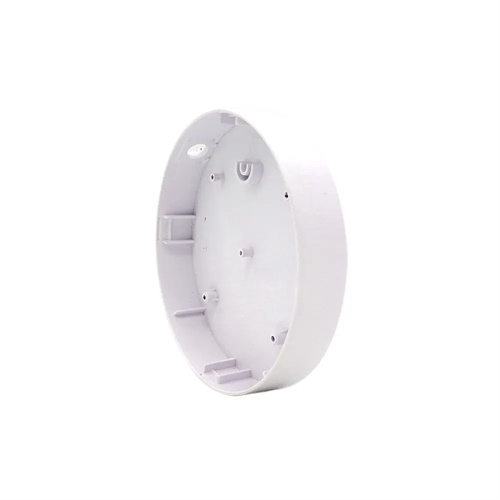Injection mold base
The mold frame of an injection mold is the mold’s foundational support component, much like the frame of a building. It provides installation, positioning, and support for the mold’s molding components, guide mechanisms, and ejection mechanisms. Its precision and rigidity directly impact the mold’s overall performance and service life. The mold frame typically consists of a fixed platen, movable platen, fixed mold base plate, movable mold base plate, guide pillars, guide sleeves, and support pillars. These parts are assembled into a single unit using fasteners like screws and pins to ensure the precise relative positioning of the mold components during opening and closing, and to withstand the various forces involved in the injection molding process. The mold frame’s dimensions and specifications are determined by the size of the product, the mold’s structural type, and the parameters of the injection molding machine. Common standard mold frames include large-gate mold frames and fine-gate mold frames. These can be purchased from professional mold frame manufacturers as needed, or custom designs can be tailored to meet specific requirements.

The fixed and movable platens are core components of the mold base, mounting the fixed and movable mold components, respectively. Their thickness and dimensions are determined based on factors such as the cavity layout and injection pressure. The fixed platen is fixed to the fixed mold base, while the movable platen is connected to the base via support columns. These columns reinforce the movable platen and prevent deformation under injection pressure. The fixed and movable platens are typically constructed of medium-carbon steels such as 45 steel or S50C, which undergo quenching and tempering to achieve a certain strength and hardness. For larger molds or those with more demanding requirements, alloy tool steels such as P20 can be used, with surface hardening to enhance wear resistance and service life. The platens require high flatness and parallelism, generally within 0.01mm/100mm, to ensure a tight seal when the mold is closed and prevent molten material from escaping and causing flash.

Guide pins and guide sleeves are key guiding components in the mold base, ensuring precise mold opening and closing. Their fit directly impacts the mold’s guiding performance and service life. Guide pins are typically fixed to the movable mold base plate or platen, while guide sleeves are mounted to the fixed mold base plate or platen. They utilize a clearance fit, typically with an accuracy of H7/h6 or H7/f7. The guide pin’s head is typically designed with a conical or spherical shape to facilitate smooth entry into the sleeve during mold closing. The guide pin’s length should ensure that a portion of the pin remains within the sleeve when the mold is fully opened, preventing separation. Guide pins and sleeves are typically made of 20-grade or 45-grade steel. The guide pin surface is carburized and hardened to a hardness of 58-62 HRC. The inner bore of the guide sleeve is also hardened to enhance wear resistance. To enhance guiding stability, large molds typically use four guide pins, located at the four corners of the mold base. Small molds can use two guide pins, but ensuring proper guiding balance is crucial.

The mold frame’s fixed and movable mold bases are connected to the injection molding machine’s fixed and movable mold plates, respectively. Their dimensions must match the machine’s installation dimensions. The bases are typically equipped with locating holes and mounting screws for positioning and securing the mold to the machine. The center of the fixed mold base typically features a sprue bushing hole for mounting the sprue bushing, which contacts the injection molding machine’s nozzle and requires high hardness and wear resistance. The material is typically T8A or T10A, and it must be quenched. The lower portion of the movable mold base typically corresponds to the machine’s ejector mechanism and is equipped with ejector holes or ejector plate guide holes to ensure smooth operation. The thickness of the fixed and movable mold bases must be determined based on the mold’s weight and installation requirements to ensure sufficient strength and rigidity to prevent deformation during installation and use.

The design of a mold frame must consider factors such as the mold’s overall layout, strength, rigidity, and cost-effectiveness. While still meeting operational requirements, the structure should be simplified and costs minimized. Standard mold frames are widely used in production due to their interchangeability, ease of procurement, and low cost. Mold designers can select the appropriate specification from the standard mold frame series based on parameters such as the number of cavities and size. For molds with specialized structures, such as large molds or complex molds with multiple cavities, a non-standard mold frame design is required. In this case, the mold frame’s strength and rigidity must be verified to ensure it can withstand loads such as injection pressure and clamping force. Mold frame assembly precision is also crucial. During assembly, the relative positioning of all components must be accurate, the clearances between guide pins and guide bushings must be uniform, and the mold plate must maintain good contact with the surface. Furthermore, mold frame maintenance is crucial. Regular lubrication of moving parts such as guide pins and guide bushings, and cleaning of debris from the mold plate surface, can extend the mold frame’s service life and ensure proper mold operation. With the development of the mold industry, mold frame manufacturing precision and standardization have continued to improve, providing a strong guarantee for efficient production and improved quality of injection molds.
